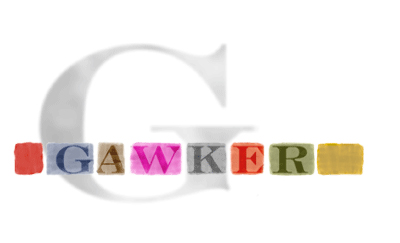10. TextPattern
Textpattern is an open source content management system originally developed by Dean Allen. While it is often listed among weblogging tools, its aim is to be a general-purpose content management system suitable for deployment in many contexts. Textpattern is written in PHP using a MySQL database backend. The current stable version is Textpattern 4.2.0. -Wikipedia.org

9. Xanga
Xanga is a website that hosts weblogs, photoblogs, and social networking profiles. It is operated by Xanga.com, Inc., based in New York City. Xanga's origins can be traced back to 1999, when it began as a site for sharing book and music reviews. It now has an estimated 40 million users worldwide. As of May 1, 2010, Alexa Internet ranked Xanga as the 1,151st most visited site on the Internet. All Xanga members receive a "Xanga Site", a web site made up of a weblog, a photoblog, a videoblog, an audioblog, a "Pulse" (mini-blog), and a social networking profile. Members also have the option of joining or making blogrings (groups). -Wikipedia.org

8. Live Journal
LiveJournal (often abbreviated LJ) is a virtual community where Internet users can keep a blog, journal or diary. LiveJournal is also the name of the free and open source server software that was designed to run the LiveJournal virtual community. LiveJournal's blogging features include those found in similar blogging sites (multiple authors, commenting, calendars, and polls). However, LiveJournal differentiates itself from other blogging sites by its WELL-like features of a self-contained community and some social networking features similar to other social networking sites. LiveJournal was started on April 15, 1999 by Brad Fitzpatrick as a way of keeping his high school friends updated on his activities. In January 2005, blogging software company Six Apart purchased Danga Interactive, the company that operated LiveJournal, from Fitzpatrick. -Wikipedia.org

7. Movable Type
Movable Type is a weblog publishing system developed by the company Six Apart. It was publicly announced on 3 September 2001, and version 1.0 was publicly released on 8 October 2001. On 12 December 2007, Movable Type was relicensed as free software under the GNU General Public License. The application supports static page generation (in which files for each page are updated whenever the content of the site is changed), dynamic page generation (in which pages are composited from the underlying data as the browser requests them), or a combination of the two techniques. -Wikipedia.org

6. Drupal
Drupal is a free and open source content management system (CMS) written in PHP and distributed under the GNU General Public License. It is used as a back-end system for at least 1% of all websites worldwide, ranging from small personal blogs to large corporate and political sites, including whitehouse.gov and data.gov.uk. It is also used for knowledge management and business collaboration. The standard release of Drupal, known as Drupal core, contains basic features common to most CMSs. These include the ability to register and maintain individual user accounts within a role-based permission / privilege system, create and manage menus, RSS-feeds, customize page layout, perform logging, and administer the system. As installed, Drupal provides options to create a classic brochureware website, a single- or multi-user blog, an Internet forum, or a community website providing for user-generated content. -Wikipedia.org

5. Gawker Media
Gawker Media is an online media company and blog network, founded and owned by Nick Denton based in New York City. It is considered to be one of the most visible and successful blog-oriented media companies. As of March 2010, it is the parent company for 10 different weblogs, including Gawker.com, Fleshbot, Deadspin, Lifehacker, Gizmodo, io9, Kotaku, Jalopnik, Jezebel, Gawker.tv, and Cityfile. All Gawker articles are licensed on a Creative Commons attribution-NonCommercial license. While Denton does not go into detail over Gawker Media's finances, he has downplayed the profit potential of blogs, declaring that "[b]logs are likely to be better for readers than for capitalists. While I love the medium, I've always been skeptical about the value of blogs as businesses," on his personal site. However, in the February 20, 2006 issue of New York Magazine, Jossip founder David Hauslaib estimated Gawker.com's annual advertising revenue to be at least $1 million two years ago, and possibly over $2 million a year. Combined with low operating costs — mostly web hosting fees and writer salaries — Denton was already believed to be turning a healthy profit in 2006. In 2009, the corporation was estimated to be worth $300 million, with $60 million in advertising revenues and more than $30 million in operating profit. -Wikipedia.org

4. Tripod
Tripod.com is a web hosting service now owned by Lycos. Originally a company aimed at offering services to college students and young adults, it was one of several sites trying to build online communities during the dot-com bubble. As such, Tripod formed part of the first wave of user-generated content. Tripod offers a variety of free and paid web hosting services including 20 megabytes of webspace and the ability to run Common Gateway Interface (CGI) scripts in Perl. In addition to basic hosting, Tripod also offers a blogging tool, a photo album manager, and the Trellix site builder for WYSIWYG page editing. In addition to its free service, Tripod also offers a variety of for-pay services including additional disk space, a shopping cart, domain names, web and POP/IMAP email. -Wikipedia.org

3. Typepad
TypePad is a blogging service from company Six Apart Ltd. Originally launched in October 2003, TypePad is based on Six Apart's Movable Type platform, and shares technology with Movable Type such as templates and APIs, but is marketed to non-technical users and includes additional features like multiple author support, photo albums and moblogging. The service is available in several languages and countries around the world, but in the United States is sold at three different paid subscription levels. TypePad is currently used by many large organizations and media companies to host their weblog, such as ABC, MSNBC, the CBC, the BBC and Sky News. -Wikipedia.org

2. Blogger
Blogger is a blog storage service that allows private or multi-user blogs with time-stamped entries. It was created by Pyra Labs, which was bought by Google in 2003. The service itself is located at www.blogger.com. Generally, the blogs are hosted by Google at subdomains of blogspot.com. Until May 1 2010 an FTP service allows pages edited through Blogger to be published to other hosts. If this service ceases, all blogger blogs will be hosted by Google, though domains other than blogspot.com may be used. -Wikipedia.org

1. Wordpress
WordPress is an open source CMS, often used as a blog publishing application powered by PHP and MySQL. It has many features including a plugin architecture and a templating system. Used by over 300 of the 10,000 biggest websites, WordPress is the most popular blog software in use today. It was first released in May 2003 by Matt Mullenweg as a fork of b2/cafelog. As of September 2009, it was being used by 202 million websites worldwide.
WordPress has a templating system, which includes widgets that can be rearranged without editing PHP or HTML code, as well as themes that can be installed and switched between. The PHP and HTML code in themes can also be edited for more advanced customizations. WordPress also features integrated link management; a search engine-friendly, clean permalink structure; the ability to assign nested, multiple categories to articles; and support for tagging of posts and articles. Automatic filters that provide for proper formatting and styling of text in articles (for example, converting regular quotes to smart quotes) are also included. WordPress also supports the Trackback and Pingback standards for displaying links to other sites that have themselves linked to a post or article. Finally, WordPress has a rich plugin architecture which allows users and developers to extend its functionality beyond the features that come as part of the base install. -Wikipedia.org

1 comment:
Hrm.. wasn't aware Tripod transitioned into a blogging platform.. I would like to suggest that blogReaction get added to this list as well. It would be great for an update.
blogReaction also offers revenue sharing for Adsense and Kontera on top of being an awesome platform.
Post a Comment